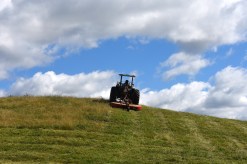Why Using a Physical Map Enhances Your Knowledge of Georgia’s Geography
Understanding the geography of Georgia is essential for students, travelers, and geography enthusiasts alike. While digital maps and satellite images are widely used today, physical maps offer unique advantages that enhance your comprehension of the state’s natural landscape. This article explores why using a physical map is an effective way to deepen your knowledge of Georgia’s geography.
What Is a Physical Map?
A physical map illustrates the natural features of an area, such as mountains, rivers, lakes, and elevation changes. Unlike political maps that focus on boundaries and cities, physical maps give you a clear sense of the terrain and environment. For Georgia, this means highlighting features like the Appalachian Mountains in the north or coastal plains in the southeast.
Visualizing Georgia’s Diverse Landscapes
Georgia boasts diverse geographical regions including mountains, plateaus, foothills, and coastal areas. A physical map helps you visualize these differences by displaying elevation through color gradients or contour lines. This allows you to understand how landscapes transition across the state—from rugged mountain ranges to flat coastal plains—giving context to climate patterns and ecosystems.
Enhancing Educational and Travel Planning Experiences
For educators and students studying Georgia’s geography, physical maps provide tangible references for lessons about landforms and natural resources. Travelers also benefit from these maps by gaining insight into terrain challenges for hiking or driving routes. Knowing where rivers flow or mountains rise can assist with planning outdoor activities or understanding local weather conditions.
Complementing Digital Tools with Traditional Maps
While GPS devices show locations precisely, they often lack detailed topographical information. Physical maps complement digital tools by offering broader geographical context at a glance without needing internet access. This makes them valuable during outdoor excursions where connectivity may be limited or when studying regional geology.
Encouraging Spatial Awareness and Critical Thinking
Using a physical map encourages users to interpret symbols representing various landforms which helps develop spatial awareness skills. Analyzing elevation changes or waterway networks promotes critical thinking about how geography influences human settlement patterns, agriculture, transportation routes, and environmental conservation within Georgia.
In summary, incorporating a US state Georgia physical map into your learning or travel toolkit enriches your understanding of this state’s unique geographic traits. Whether you’re exploring academic interests or planning adventures around Georgia’s diverse landscapes, these traditional maps remain indispensable resources that bring its natural features vividly to life.
This text was generated using a large language model, and select text has been reviewed and moderated for purposes such as readability.





